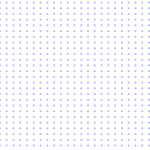
White Space in Web Design – How to Utilize White Space
White space in web design or blank space is a favored design element by web design professionals. What is white space you might ask? It’s like a fresh breeze and its optimum use creates an enjoyable, comforting and engaging look. As opposed to direct mailer designs where every pixel needs to be designed for maximum impact. White spaces in web design make the product look subtle but confident. It also makes it easier to direct audiences towards the action you expect them to take. However, like all good things, there is also a limit to the amount of white spacing you can have in website design. Too much of it can literally “zone-out” your content, defeating the act of users concentrating on the highlighted content in a meaningful flow. So how can one choose to optimize the use of white spaces in web design? Here are some useful tips to do so:
Clear Hierarchy of Content
The most important purpose of negative space composition in website design is to establish tiered page elements. This would include everything from logo, headers, image slideshows, navigation, welcome note and footers. All these elements engage different levels of importance and are to be arranged accordingly in size and placement. Negative spaces are also used to bring out texts from a graphic/picture background (wherein the opacity is reduced to give the illusion of white space).
Focus on Margin, Image, Line Height and Padding
Having white spaces in your website doesn’t need to be a design overhaul. All you need is some style sheet rules for keeping space around margin edges and image padding. Increased line height also provides better readability.
Small changes such as these will bring about noticeable difference that will make the visitor stay longer on your website. These design specifications make it easier to scan and read small chunks of the page rather than larger blocks. Conversion analytics suggest that a font between 520 and 550 pixels should be the “golden number” for any content area. White spaces around logos, title, sub-headings and other major elements also improve readability by drawing the reader’s attention
Consistency
When playing around with white space in design and bold fonts, consistency is the key to success. You should be able to offer a look and appeal that is also consistent with the rest of the pages and more importantly, the personality of the brand. Designers can either go for creating their own templates or buy readymade templates that integrate unique white space features.
More White Space Means Better Comprehension?
Studies have interestingly revealed that a lack of margin can increase the reading speed. However, in this case, reading speed doesn’t quite matter as you are pinning the conversion rate on the audience’s ability to understand the content and take the desired action.
However, too many white spaces can be troublesome. White space keeps web design simple and elegant, but you need to have an authoritative content to highlight it. White space is to be used in combination with bigger and bolder images and fonts. Only then can you hope to draw the visitor’s attention.


